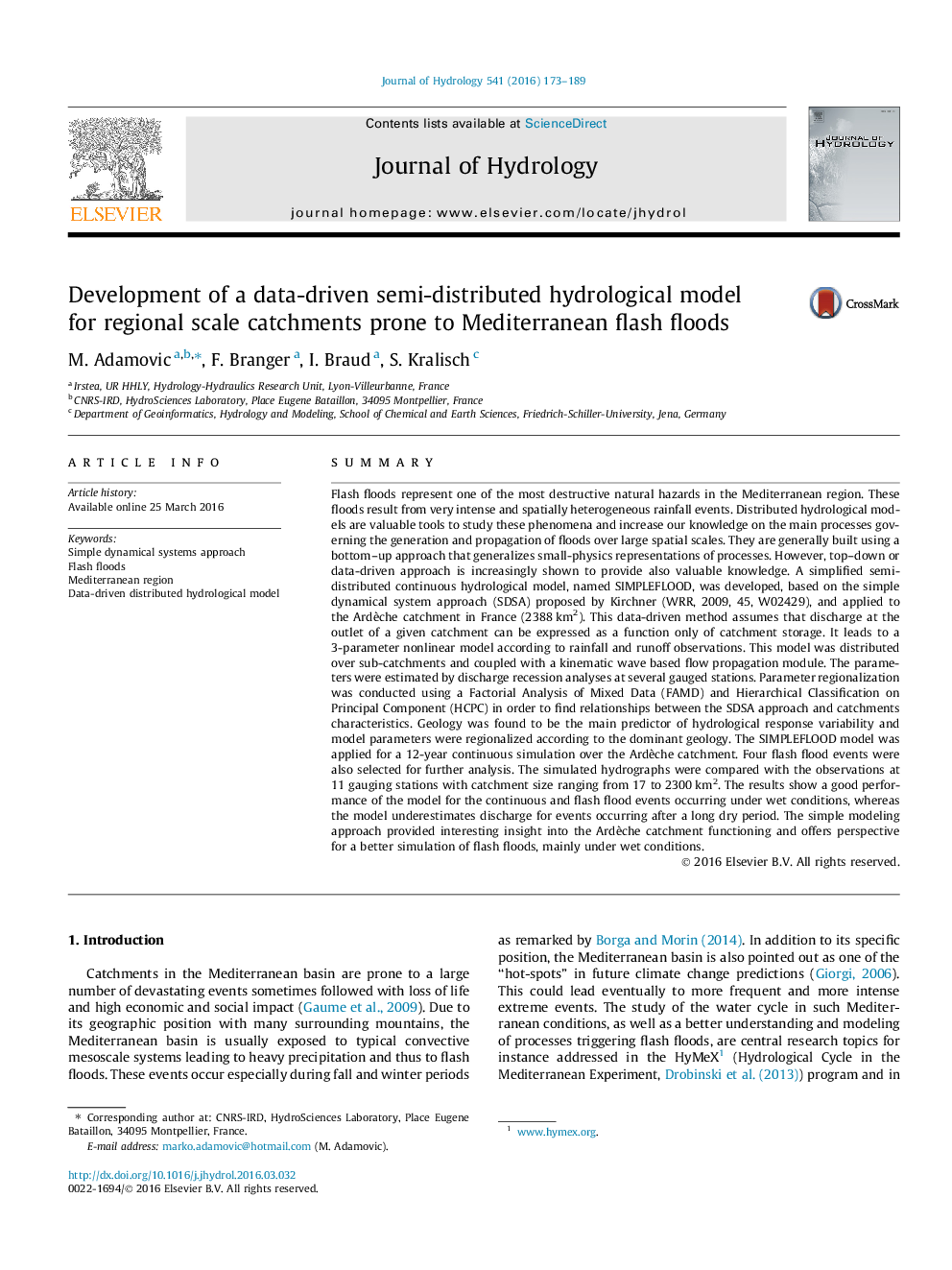| کد مقاله | کد نشریه | سال انتشار | مقاله انگلیسی | نسخه تمام متن |
|---|---|---|---|---|
| 6409367 | 1332869 | 2016 | 17 صفحه PDF | دانلود رایگان |
- A simplified semi-distributed continuous hydrological model SIMPLEFLOOD is proposed.
- Parameter regionalization was conducted using a FAMD and HCPC analysis.
- Geology was found to be the main predictor of hydrological response variability.
- The SIMPLEFLOOD was run for a 12-year continuous period over the Ardèche catchment.
- Good performance for the continuous and flash flood events under wet conditions.
SummaryFlash floods represent one of the most destructive natural hazards in the Mediterranean region. These floods result from very intense and spatially heterogeneous rainfall events. Distributed hydrological models are valuable tools to study these phenomena and increase our knowledge on the main processes governing the generation and propagation of floods over large spatial scales. They are generally built using a bottom-up approach that generalizes small-physics representations of processes. However, top-down or data-driven approach is increasingly shown to provide also valuable knowledge. A simplified semi-distributed continuous hydrological model, named SIMPLEFLOOD, was developed, based on the simple dynamical system approach (SDSA) proposed by Kirchner (WRR, 2009, 45, W02429), and applied to the Ardèche catchment in France (2388 km2). This data-driven method assumes that discharge at the outlet of a given catchment can be expressed as a function only of catchment storage. It leads to a 3-parameter nonlinear model according to rainfall and runoff observations. This model was distributed over sub-catchments and coupled with a kinematic wave based flow propagation module. The parameters were estimated by discharge recession analyses at several gauged stations. Parameter regionalization was conducted using a Factorial Analysis of Mixed Data (FAMD) and Hierarchical Classification on Principal Component (HCPC) in order to find relationships between the SDSA approach and catchments characteristics. Geology was found to be the main predictor of hydrological response variability and model parameters were regionalized according to the dominant geology. The SIMPLEFLOOD model was applied for a 12-year continuous simulation over the Ardèche catchment. Four flash flood events were also selected for further analysis. The simulated hydrographs were compared with the observations at 11 gauging stations with catchment size ranging from 17 to 2300 km2. The results show a good performance of the model for the continuous and flash flood events occurring under wet conditions, whereas the model underestimates discharge for events occurring after a long dry period. The simple modeling approach provided interesting insight into the Ardèche catchment functioning and offers perspective for a better simulation of flash floods, mainly under wet conditions.
Journal: Journal of Hydrology - Volume 541, Part A, October 2016, Pages 173-189
